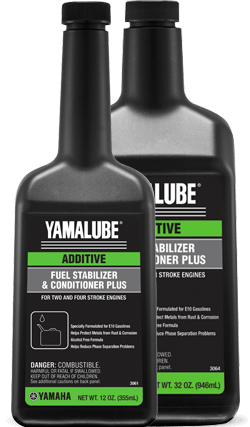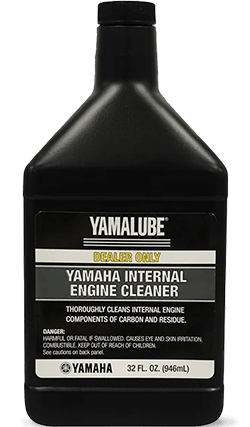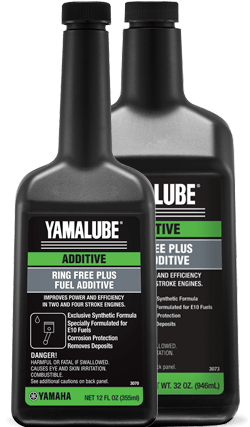KEEP YOUR MACHINE CLEAN
The largest source of trouble with marine engines lies with the fuel and fuel system. Pay regular attention to both—from hoses and connections to proper filtration and fuel additives. Let’s talk about the products and procedures that will help keep your fuel system clean and your outboard motor performing at its best.
CHOOSE YAMALUBE®
Use to remove carbon and other contaminants from cylinders, pistons, rings, and valves. A great inclusion into your seasonal maintenance. Clean engines last longer.
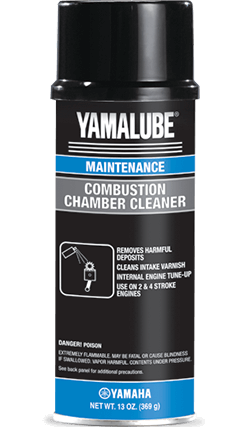

Ethanol attracts water. Ethanol is alcohol. Being hygroscopic, it attracts water molecules, which means water will collect in your fuel. When the concentration of water molecules in your fuel tank reaches just ½ of 1%, the water molecules will bond with the alcohol and sink to the bottom, where your fuel pick up is. Depending on the amount of water ingested into your outboard, this can result in everything from running problems to catastrophic damage.
It Loosens Debris In Your System. Ethanol is also a powerful solvent that can loosen debris in your fuel tank as well as all the tanks and lines it was in before it got to you. Once in your outboard, this debris can cause everything from running issues to a no-start, no-run condition.
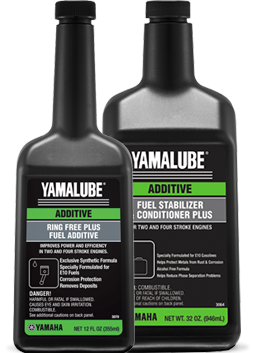
This powerful formula also provides superior deposit control, cleaning fuel injectors, carburetors, intake valves, intake ports and combustion chambers from deposits that can cause knocking/pinging, power loss, hesitation, shortened spark plug life, piston ring sticking and more.
Prevent fuel oxidation and phase separation. Yamalube Fuel Stabilizer & Conditioner PLUS features a non-alcohol-based formula specifically designed to work in the moisture-rich environments common to boats.
NOTE: No additive will restore stale fuel, remove water, or cure ethanol-related issues.
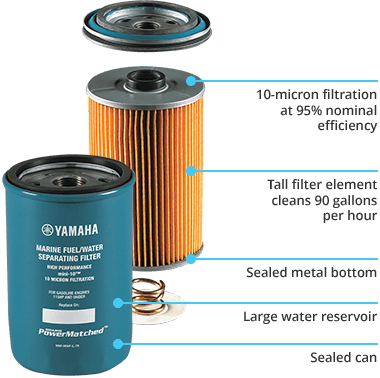
DO IT YOURSELF
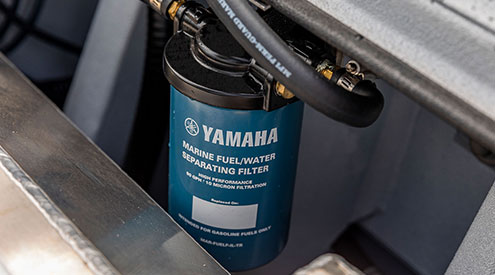
10-MICRON FUEL/WATER SEPARATING FILTER
Locate: The spin-on 10-micron fuel/water separating filter is located in the fuel line between your fuel tank.
Replace: After every fifty hours of engine operation or if you get a bad tank of gas. When installing a new filter, apply a thin film of clean engine oil to the gasket when installing the filter. That will make it much easier to remove when it’s time. Also filling a new replacement filter about ¾ full with fresh, stabilized fuel before installation will make priming the fuel system quicker and easier.
TIP: Do not simply remove the filter, dump the fuel, and reinstall it. Captured debris and water could enter the “clean” side of the filter and be released into your fuel system.
PRIMARY ON-ENGINE FILTER
Locate: The primary on-engine filter is typically on the front, side, or rear of the powerhead. It’s usually see-through and features a small water trap at the bottom of the cup. If there’s water in here, it’s time to change your 10-micron filter.
Replace: After every 100 hours of engine operation.
TIP: On Yamaha outboards, there may be a red ring visible inside this filter. Don’t ever remove it. If it’s floating, you’ve got water in this filter’s trap.
VAPOR SEPARATOR TANK (VST) FILTER
Locate: This filter is attached to the electric fuel pump in the Vapor Separator Tank (VST) and filters gas again just before it’s pressurized into the fuel injection rail(s).
Inspect and/or replace: Have your authorized Yamaha Marine dealer replace after every 300 hours of engine operation. (Provided that the 10-micron external and initial on-engine filters have been serviced and maintained properly. Properly treated fuel will also extend the life of these filters.)
IN-LINE FILTER
Some models have an in-line filter between the primary fuel pump and the VST (vapor separator tank) and/or in the fuel line between the VST and the fuel rail, located along the top of the outboard.
FUEL INJECTOR SCREEN
These fine-mesh screens are built into each fuel injector. If debris makes it here, the fuel injectors must be professionally removed and cleaned or replaced.
Fuel treatment isn’t just for extended storage. In fact, today’s ethanol-blended gasoline can begin to break down in a matter of weeks, not months. To prevent oxidation and phase separation in ethanol-enriched fuels (and the potential engine damage that comes with that) treat every tank with Yamalube Fuel Stabilizer & Conditioner PLUS.
TIP: Buy your gas where they sell a lot of it. The goal is to keep your boat’s fuel fresh and potent at all times. Buy the freshest fuel you can find and treat every tank.
TIP: Be sure to add Fuel Stabilizer & Conditioner PLUS and Ring Free PLUS before filling gas cans, and keep them in a cool, dark place if possible.
Fuel treatment isn’t just about fuel, it’s also about your engine. Protect your fuel system metals from sulfate salt corrosion and decarbonize your engine for maximum performance. Add Yamalube Ring Free PLUS at every fill up.
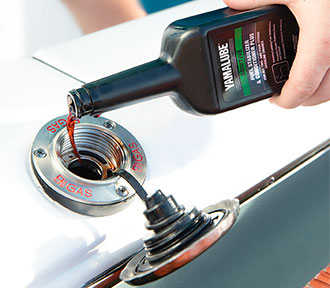
This includes things like cleaning the carbon, gum, and varnish out of your engine an carburator. Our dealers have professional-strength products and the right tools and knowledge to service your outboard and keep it in proper running condition.
Find your nearest authorized Yamaha Marine dealer.
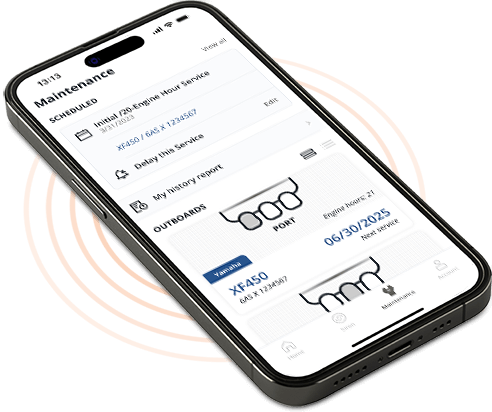
IS IT TIME TO CHANGE YOUR FUEL FILTERS?
Know instantly with the Siren Connected Boat<sup>™</sup> App When was the last time your 10-micron fuel/water filter was changed? Stay on top of your maintenance with the Siren Connected Boat app. It tracks DIY and dealer-completed service right on your smartphone.
When was the last time your 10-micron fuel/water filter was changed? Stay on top of your maintenance with the Siren Connected Boat app. It tracks DIY and dealer-completed service right on your smartphone.

